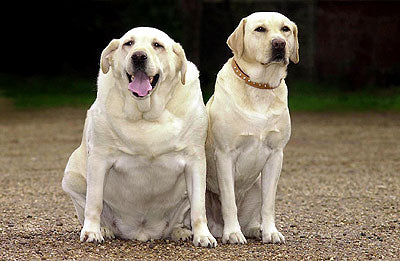
How to Tell If Your Dog Is Overweight (And What to Do About It)
Share
As much as we love to spoil our dogs, it's important to be mindful of their weight. Just like humans, dogs can become overweight or obese, and this can lead to serious health issues. Knowing the signs of obesity and how to manage your dog’s weight through proper nutrition is key to keeping them healthy and happy.
Signs Your Dog Might Be Overweight
-
Rib Check: One of the easiest ways to tell if your dog is overweight is by feeling their ribs. You should be able to feel their ribs easily without a thick layer of fat. If you can’t, it could be a sign that your dog is carrying extra weight.
-
Visible Belly Fat: When your dog stands, their belly should tuck up slightly behind their ribcage. If their stomach hangs or is rounded, they might be overweight.
-
Lack of Energy: Overweight dogs often have reduced energy levels. If your dog is lethargic, has trouble playing, or tires quickly during walks, their weight may be affecting their stamina.
-
Difficulty Moving: Obesity can cause joint pain, making it harder for your dog to run or jump. If your dog seems stiff or is reluctant to move, weight could be a contributing factor.
Health Risks of Obesity
Carrying excess weight can lead to a variety of health problems in dogs, including:
- Joint issues like arthritis
- Heart disease and high blood pressure
- Diabetes
- Reduced lifespan and overall quality of life
How Proper Nutrition Can Help
The first step in managing your dog’s weight is adjusting their diet. Choose high-quality, portion-controlled food, and avoid overfeeding or excessive treats. Opt for treats that are low in calories and filled with nutrients. Regular exercise, like daily walks or playtime, is equally important to help your dog burn off excess energy.
Consult your vet to determine the right amount of food for your dog’s breed, age, and activity level. With the right nutrition and care, you can help your dog achieve and maintain a healthy weight, ensuring they live a long, active life.
